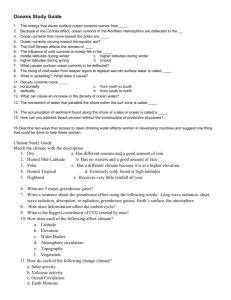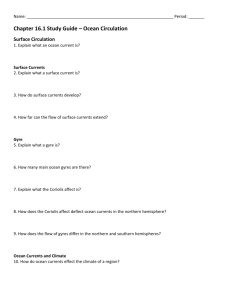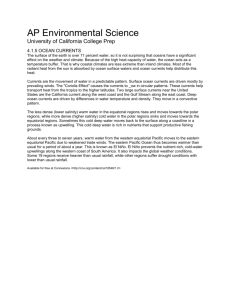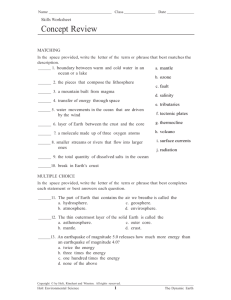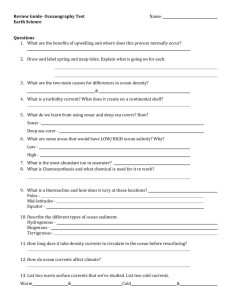16.1_fullnotes
advertisement
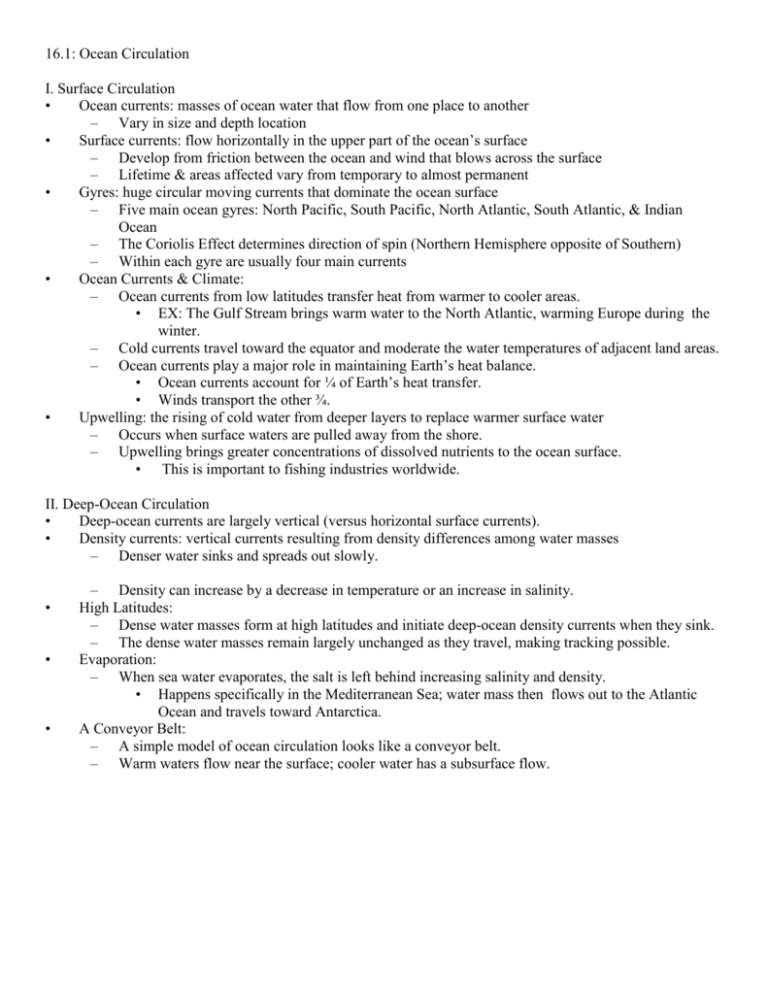
16.1: Ocean Circulation I. Surface Circulation • Ocean currents: masses of ocean water that flow from one place to another – Vary in size and depth location • Surface currents: flow horizontally in the upper part of the ocean’s surface – Develop from friction between the ocean and wind that blows across the surface – Lifetime & areas affected vary from temporary to almost permanent • Gyres: huge circular moving currents that dominate the ocean surface – Five main ocean gyres: North Pacific, South Pacific, North Atlantic, South Atlantic, & Indian Ocean – The Coriolis Effect determines direction of spin (Northern Hemisphere opposite of Southern) – Within each gyre are usually four main currents • Ocean Currents & Climate: – Ocean currents from low latitudes transfer heat from warmer to cooler areas. • EX: The Gulf Stream brings warm water to the North Atlantic, warming Europe during the winter. – Cold currents travel toward the equator and moderate the water temperatures of adjacent land areas. – Ocean currents play a major role in maintaining Earth’s heat balance. • Ocean currents account for ¼ of Earth’s heat transfer. • Winds transport the other ¾. • Upwelling: the rising of cold water from deeper layers to replace warmer surface water – Occurs when surface waters are pulled away from the shore. – Upwelling brings greater concentrations of dissolved nutrients to the ocean surface. • This is important to fishing industries worldwide. II. Deep-Ocean Circulation • Deep-ocean currents are largely vertical (versus horizontal surface currents). • Density currents: vertical currents resulting from density differences among water masses – Denser water sinks and spreads out slowly. • • • – Density can increase by a decrease in temperature or an increase in salinity. High Latitudes: – Dense water masses form at high latitudes and initiate deep-ocean density currents when they sink. – The dense water masses remain largely unchanged as they travel, making tracking possible. Evaporation: – When sea water evaporates, the salt is left behind increasing salinity and density. • Happens specifically in the Mediterranean Sea; water mass then flows out to the Atlantic Ocean and travels toward Antarctica. A Conveyor Belt: – A simple model of ocean circulation looks like a conveyor belt. – Warm waters flow near the surface; cooler water has a subsurface flow.



